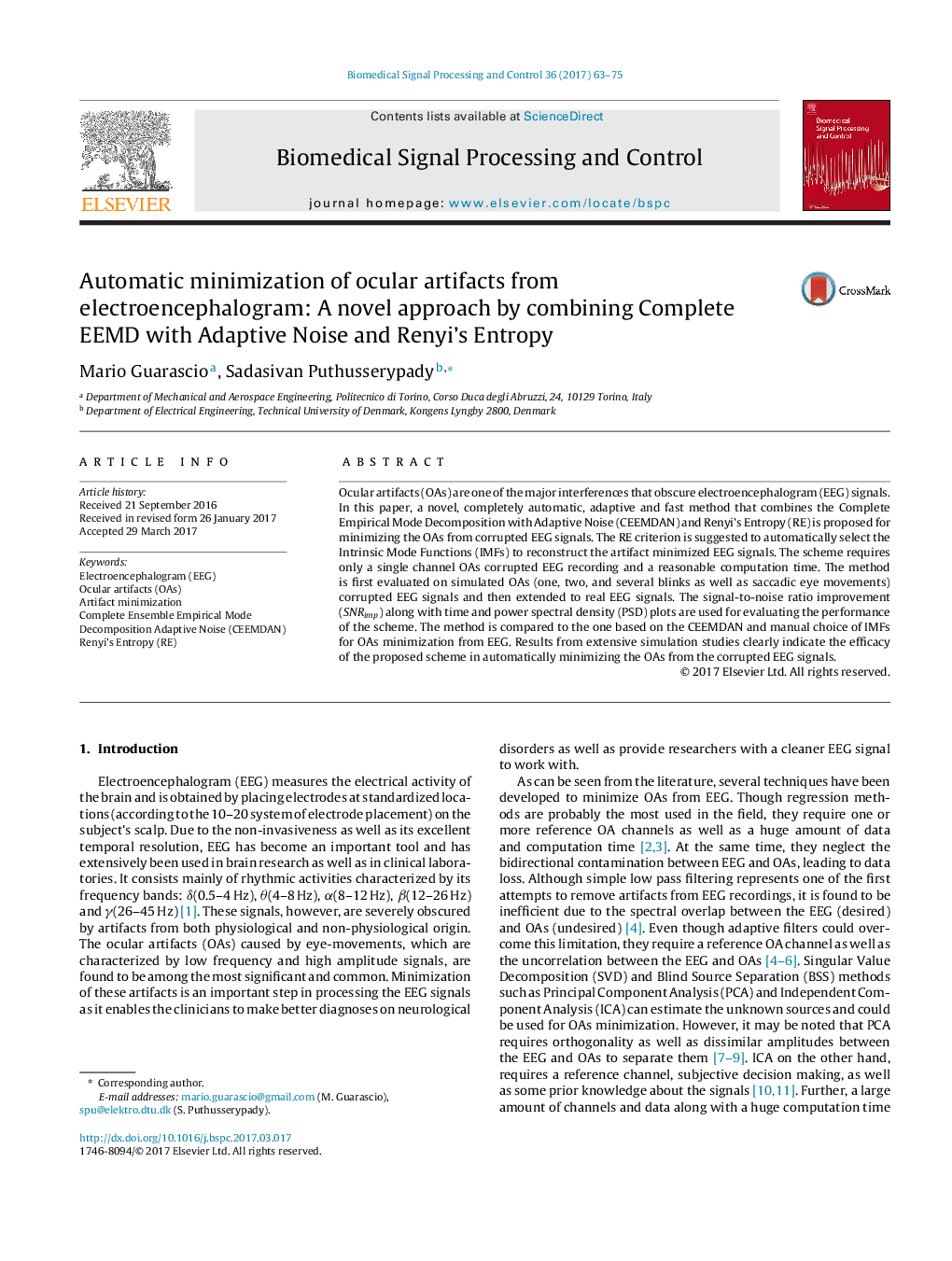| Article ID | Journal | Published Year | Pages | File Type |
|---|---|---|---|---|
| 4973535 | Biomedical Signal Processing and Control | 2017 | 13 Pages |
Abstract
Ocular artifacts (OAs) are one of the major interferences that obscure electroencephalogram (EEG) signals. In this paper, a novel, completely automatic, adaptive and fast method that combines the Complete Empirical Mode Decomposition with Adaptive Noise (CEEMDAN) and Renyi's Entropy (RE) is proposed for minimizing the OAs from corrupted EEG signals. The RE criterion is suggested to automatically select the Intrinsic Mode Functions (IMFs) to reconstruct the artifact minimized EEG signals. The scheme requires only a single channel OAs corrupted EEG recording and a reasonable computation time. The method is first evaluated on simulated OAs (one, two, and several blinks as well as saccadic eye movements) corrupted EEG signals and then extended to real EEG signals. The signal-to-noise ratio improvement (SNRimp) along with time and power spectral density (PSD) plots are used for evaluating the performance of the scheme. The method is compared to the one based on the CEEMDAN and manual choice of IMFs for OAs minimization from EEG. Results from extensive simulation studies clearly indicate the efficacy of the proposed scheme in automatically minimizing the OAs from the corrupted EEG signals.
Keywords
Related Topics
Physical Sciences and Engineering
Computer Science
Signal Processing
Authors
Mario Guarascio, Sadasivan Puthusserypady,
